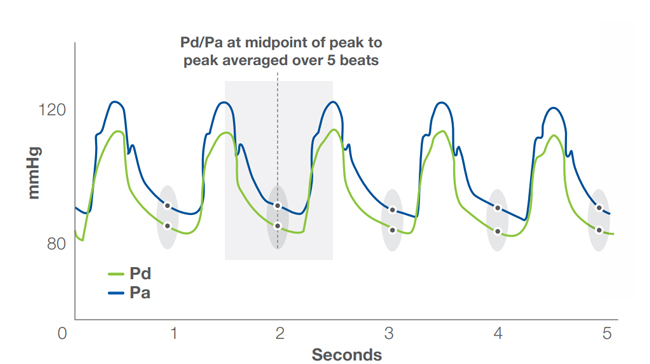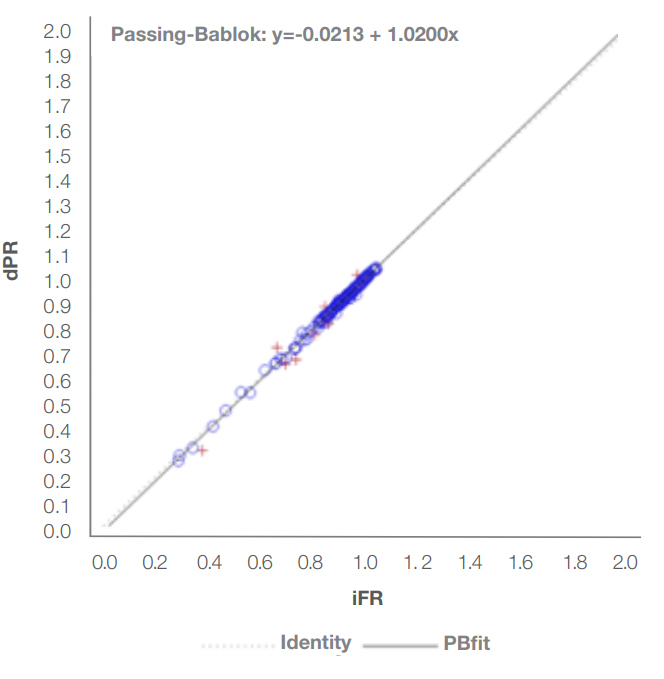ACIST Diastolic Pressure Ratio (dPR)
Non-hyperemic index for coronary physiology
ACIST dPR is not approved in all markets
ACIST Diastolic Pressure Ratio (dPR)
Non-hyperemic index for coronary physiology
ACIST diastolic pressure ratio (dPR), using the ACIST RXi® Rapid Exchange System and Navvus® II MicroCatheter, provides a non-hyperemic alternative for physiological assessment of coronary disease.
Reducing costs, time and patient discomfort
Non-hyperemic pressure ratios, such as dPR, may reduce patient discomfort*, cost** and procedural time.***
Reduced Patient Discomfort
Reduced Cost
Reduced Time
ACIST dPR algorithm

ACIST dPR by the numbers
(compare to iFRcalc)1
0.89
dPR cutpoint
0.999
AUC
98.3%
Sensitivity
99.2%
Specificity
98.3%
PPV
99.2%
NPV
Analysis of the ACIST FFR Study1
Purpose

Methods

Key points
- ACIST dPR is highly correlated with iFRcalc
- ACIST dPR provides similar diagnostic accuracy as iFRcalc
Results
Diagnostic accuracy of dPR (cutpoint of 0.89) referenced to iFRcalc (0.89) was 98.88%
References
* Reduced side effect profile when comparing resting approach (iFR, dPR, Pd/Pa) to FFR with adenosine induced hyperemia
** Cost savings based on the reduced cost of utilizing a resting approach compared to conventional FFR and respective cost of admInistration of hyperemic agent (adenosine)
*** When comparing resting index (iFR, dPR, Pd/Pa) to FFR with adenosine induced hyperemia
1. Data on file TR-07879
2. Sen S, Escaned J, Malik IS, et at. Development and validation of a new adenosine-independent index of stenosis severity from coronary wave-intensity analysis: results of the ADVISE (ADenosine Vasodilator Independent Stenosis Evaluation) study. J Am Coll Cardbl. 2012:59(15)1392-1402. doi:10.1016/j.jacc.2011.11.003.
ACIST, ACIST FiXi and Nawus are trademarks of ACIST Medical Systems, Inc. ACIST Medical Systems, Inc., reserves the right to modify the specifications and features described herein, or discontinue manufacture of the product described at any time without prior notice or obligation. Please contact your authorized ACIST representative for the most current information.
© 2020 ACIST Medical Systems, Inc. Al Rights Reserved.


